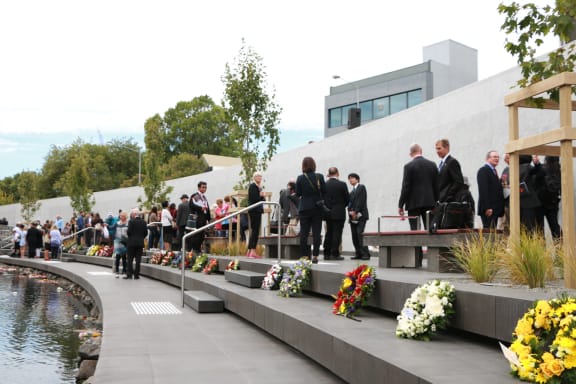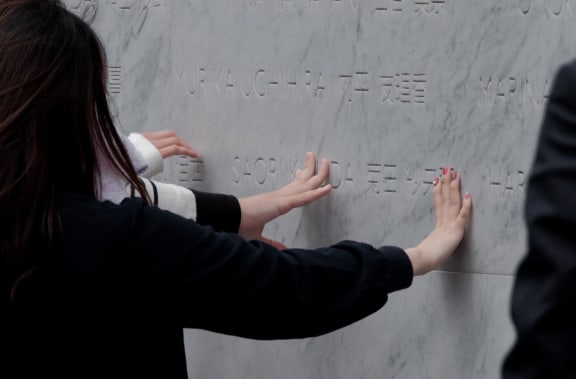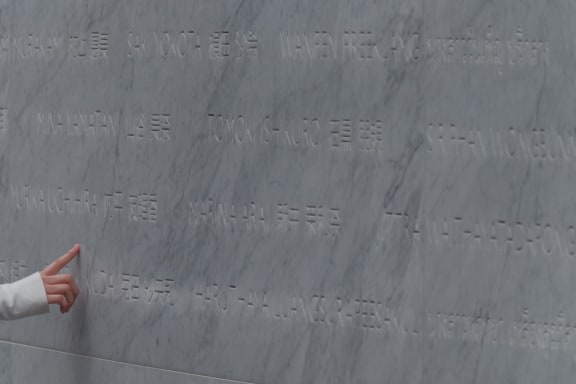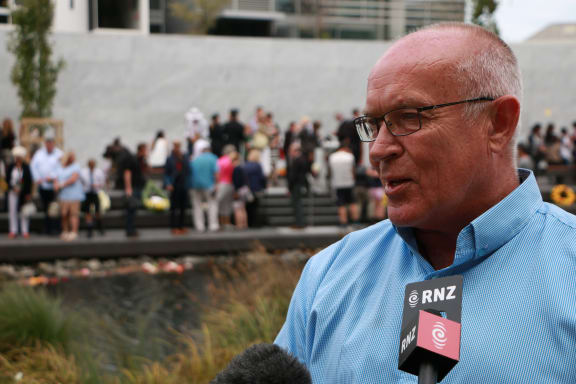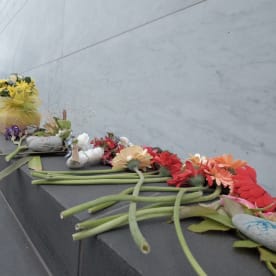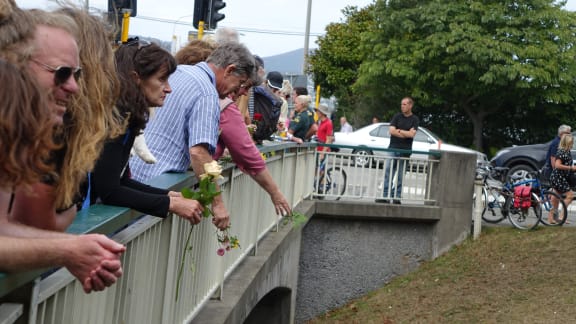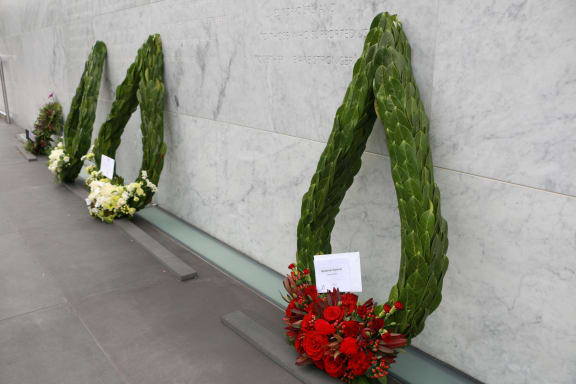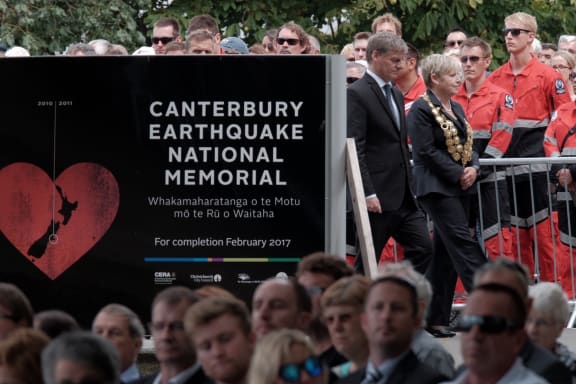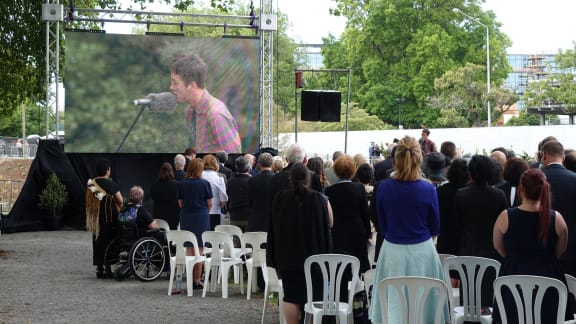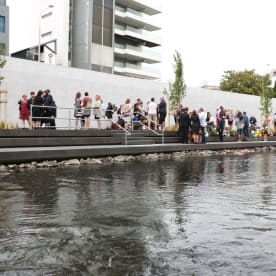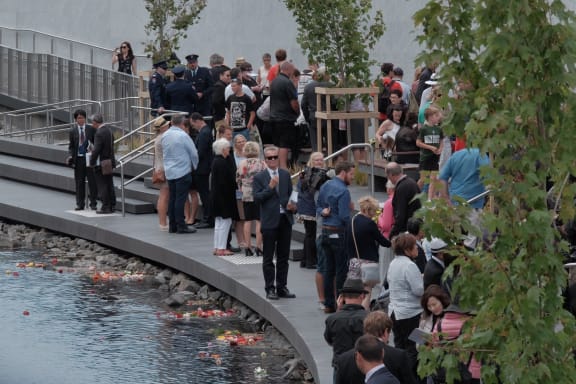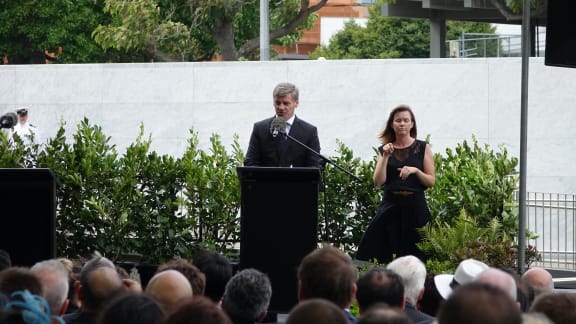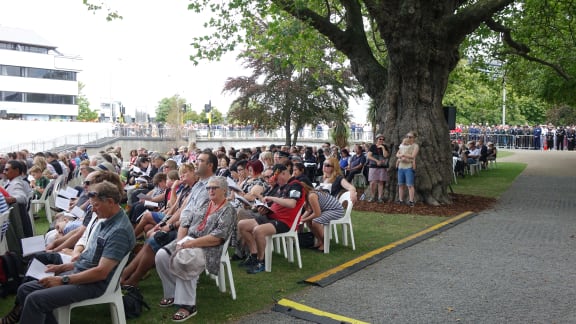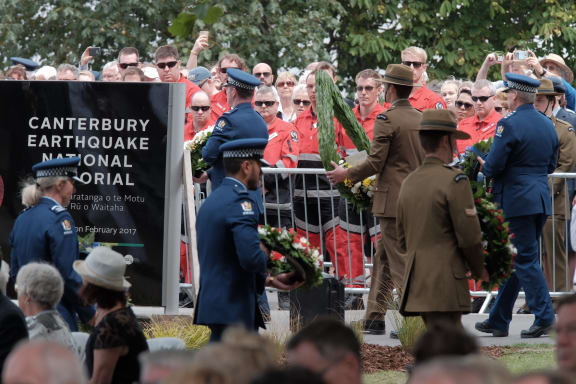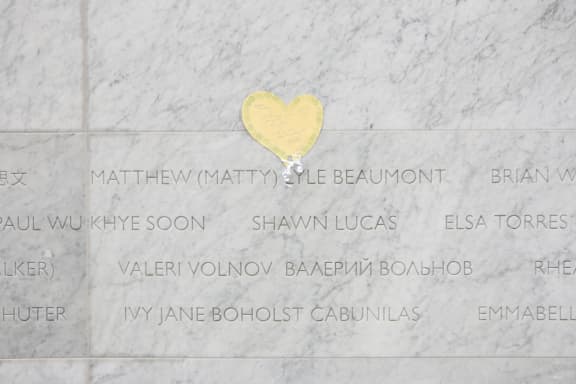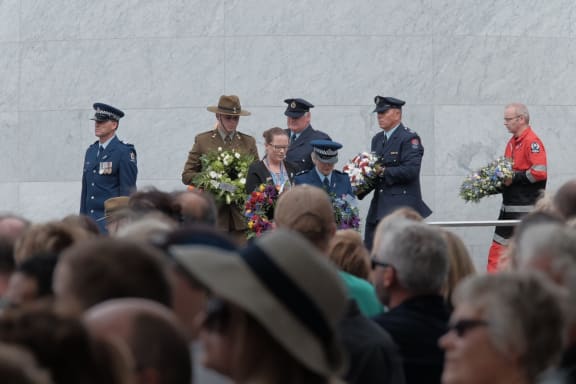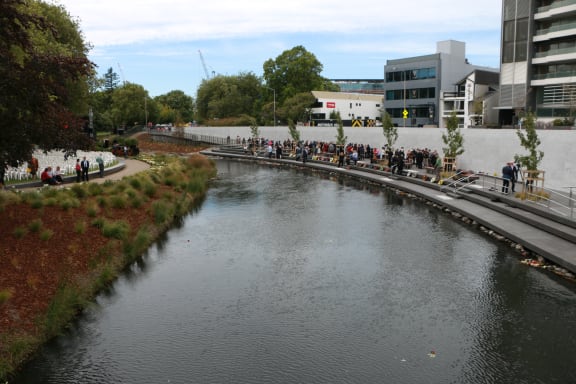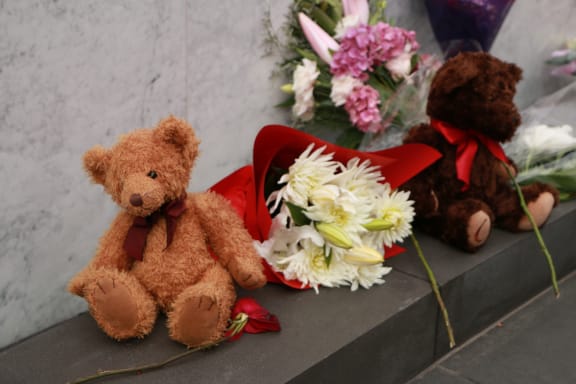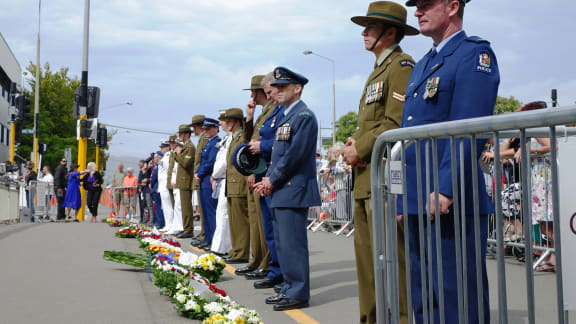A firefighter who crawled into the ruins of the CTV building after the devastating Christchurch earthquake returned to the site for the first time since the disaster today.
The Canterbury Earthquake National Memorial was unveiled today - the sixth anniversary of the deadly disaster - with thousands turning out to mark the date.
The 150m memorial wall is inscribed with the names of the 185 people killed in the 6.3 magnitude earthquake, which struck at 12.51pm on 22 February 2011.
Dozens of firefighters, rescue workers and doctors crawled into the crushed and smouldering rubble in the hours after the CTV building collapsed, risking their lives to save those trapped.
Terry Gyde - a firefighter who has also been battling the Port Hills fires over the past week - was one of them.
He received a bravery award for his work six years ago today, but has never been back to the CTV site.
He returned to the site today, along with crowds of other people paying their respects, and told Checkpoint with John Campbell that while he tried not to remember the quake and rescue efforts, it was the day that the city changed.
"It's the day that my life changed in so many ways. I've just walked through the city now and it's probably the first time I've walked through the city since the earthquake. There's nothing here for us to go to. We go to restaurants in the suburbs, the only time we go into the city is to go to the central station and change some breathing apparatus cylinders or something."
He said when he turned up at the CTV building site late in the afternoon of 22 February, it was "bedlam".
"Here's a building on the deck and you go 'oh my God, where do I start'. And so the bosses were giving you instructions, and later on I went around the back of the building and saw that there were a group of guys who had found a pocket of students, and from there, we kind of created a train, and for a start, my job was simply a gofer, but as people got more and more tired and dragged out more victims, you moved further up the chain until it was your shot at it."
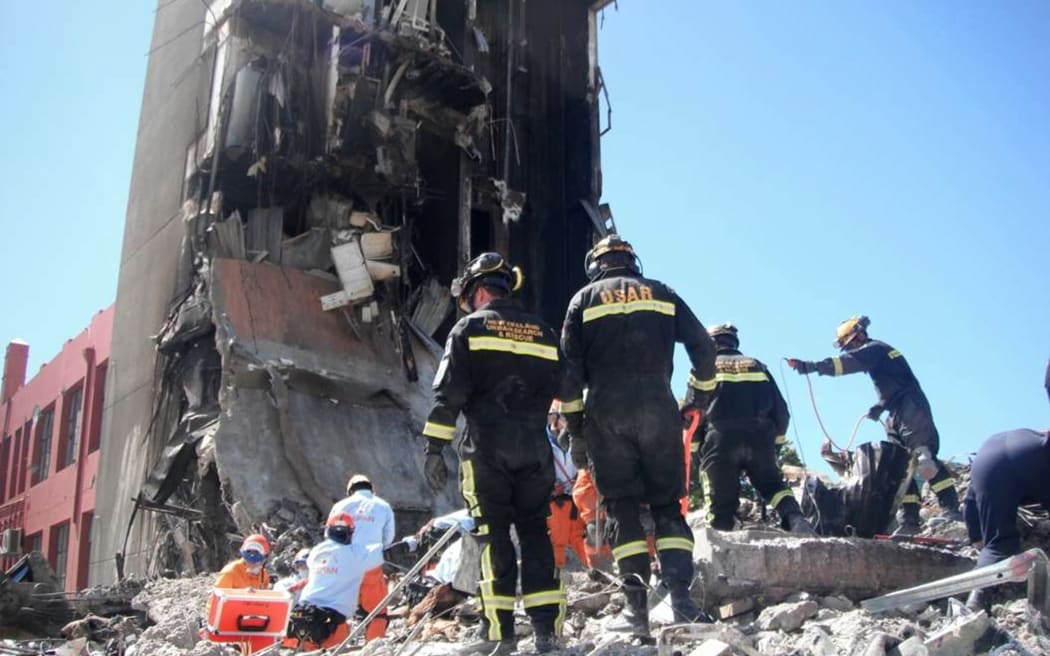
Rescue teams on the scene of the CTV building collapse in 2011. Photo: AFP / USAR
Mr Gyde had to remove bodies out to get to the survivors, and still remembers how the victims were trapped by their feet.
"There were 16 we pulled out of that hole, and eight were deceased, and eight who were alive. And they were all trapped by their feet, that was the overwhelming thing, that every single one of them was trapped by their feet. And to try and get them out was the most difficult thing, because you couldn't take equipment in, you couldn't wear you helmets or have any protective gear on whatsoever, just the coat.
"And when you did start choking on the smoke because the fire was still burning, we just got one of the other guys to go out of the hole, and then get a breathing cylinder and we would just turn the cylinder on so we could breathe a little bit, and then turn it off, and just use it sparingly."
He said the "fantastic" support from the community in the wake of the earthquake had been repeated in the past week with the fires on the hills above the city.
While he still struggled after the earthquake, it had been an honour to go out there and serve the people with their rescue efforts, he said.
"All that training we did over 25 years prior to it, what a pain in the arse that is, and to actually be able to apply all that training, - and we used every ounce of training, plus more - to get through what we did. And every firefighter and emergency person, and the public, went way beyond anything that you would ever ask of someone."
